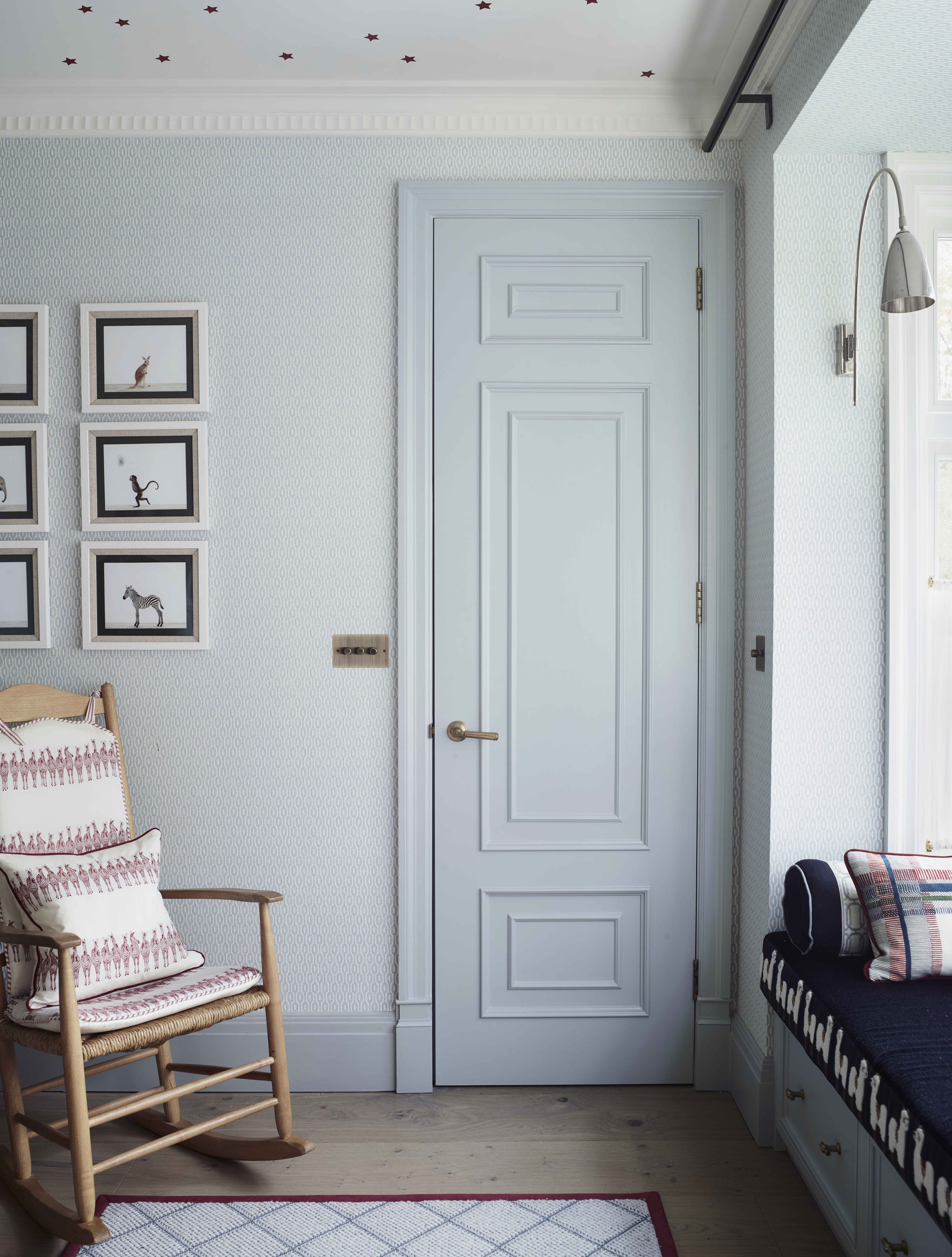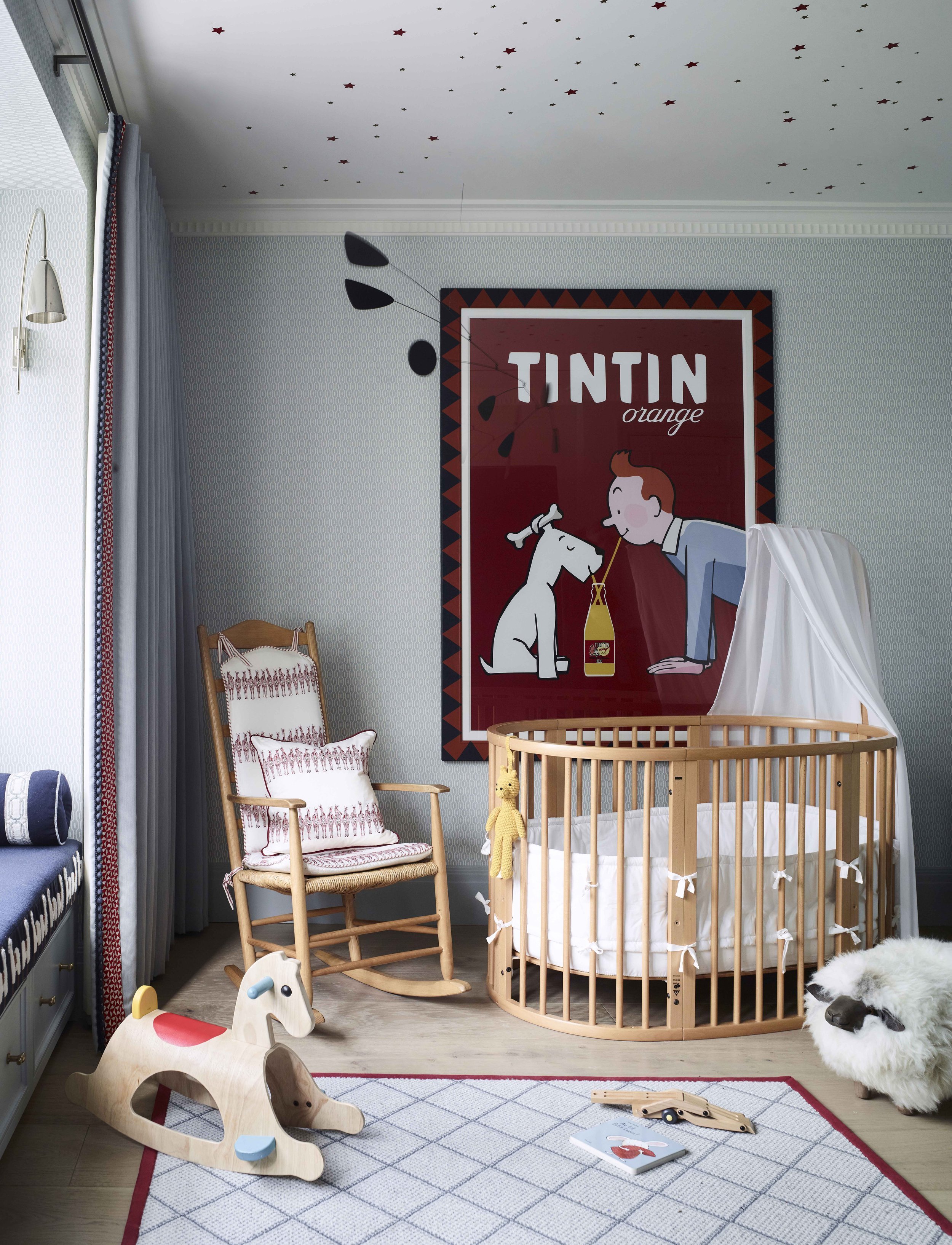7 design tips for creating a bedroom your kids will love
If you’ve ever thought designing a child’s bedroom is easy, think again! It involves more than putting up cute wallpaper and installing miniature furniture. A truly successful scheme is one that will please you and your children now and as they grow older, so you don’t have to re-think it every couple of years. Read on for my top seven tips to getting kids’ bedrooms right.
1. Plan the overall space
When designing your child’s bedroom, think about how the space will be used. Remember that, unlike adults, children use their bedrooms for more than just sleeping. You also need to allocate space for playing, studying, reading and entertaining friends. Although the bed is obviously important (see point 4), it is only one of several elements and shouldn’t be the sole focus of the room.
For younger children, having room to play is essential. Start by maximising any spare floor space. This will allow your child to sit on the floor and play with a train set or a large puzzle without feeling cramped. It will also mean large-scale creative projects can be left out for a day or two without arguments about clearing them away!
2. Create areas of activity
Your child might be too young for a desk right now, but it’s worth considering where it will eventually go. In any case, they may want a table for drawing or craft in the meantime, which will help mark this space out. As such, you should factor in the positions of sockets for a desk lamp and computer from the start.
For children of all ages, a reading nook is a lovely addition. If you have room, include a comfortable armchair, a loveseat or even a sofa within the scheme. Or, in smaller bedrooms, consider a daybed that can be used as a sofa during the day. What’s important is that it will be a cosy and quiet space of their own, where they can relax and read.
3. Choose stylish and functional storage
When selecting storage for a child’s bedroom, it’s important to strike a balance between functionality and style. Although you won’t need as much storage as in an adult’s room, keep in mind that your child’s clothing will increase in size and number as they grow. For example, toddler’s clothes don’t need much hanging height, but this will change over time.
If you’re planning a wardrobe, a good combination of shelves and hanging space is key, but also incorporate drawers that your child can easily access. This will help them learn to dress themselves from a young age. Elsewhere in the room, include shelving where children can display their teddies, dolls and Lego creations. Giving them ownership over the shelves may encourage them to clear up their own toys – though this won’t necessarily happen, of course! To keep things tidy, include both open and closed storage, with baskets they can reach and use.
4. Think carefully about the bed
Growing children need good support while they sleep, so invest in a bed and mattress that will offer that. As soon as they’re out of their cot, it’s worth buying a full-size single rather than a small children’s bed, which will need replacing in a few years. Keep in mind that children of all ages like to bounce on their beds, so whatever you buy, ensure it is robust enough to withstand this!
When it comes to the style of the bed, bunk beds are a great choice for a child’s room, as there’s always space for a friend to stay over. If your ceilings aren’t high enough, consider a single bed with a trundle below, which can be pulled out when needed. For bedrooms with plenty of space, a double bed with a double trundle underneath is ideal for slumber parties in the short term and also a future-proof choice for when they turn into teenagers.
5. Don’t underestimate the importance of window dressings
Some children need total sensory deprivation to sleep, and blackout curtains are usually the best option to achieving this. In my opinion, curtains should always hang just a few millimetres above the floor to help keep light out. Another tip: to add weight, quality and longevity to curtains, I always include an interlining, an additional layer of fabric sewn between the curtain and the blackout lining.
If there isn’t enough space for curtains and you need to use Roman blinds instead, be aware that it’s difficult to get the room properly dark. This is even the case with blackout blinds because light bleeds round the edges. One way to improve this is to mount a blackout blind within the window’s reveal and a second window treatment outside. If the window is small, mount the second window treatment a little higher than you need to, as this will give the impression the window is taller than it is.
6. Consider the lighting scheme
In kids' bedrooms, it's a good idea to have layered lighting. This allows them to choose the right atmosphere to suit their activity. Include a combination of downlights and ceiling lights, table and desk lamps, and reading lights by the bed and seating area. This way, they can mix and match the lighting according to whether they're reading, relaxing, or studying. Children also love the effect that fairy lights bring to the space, so consider stringing some around their bed or reading nook. It will create a magical effect when they're chilling out with friends.
7. Take time over the decoration
When it comes to decorating a child’s room, it’s important to consider their age and design accordingly for the next three to five years. Children grow up quickly, but not so fast that you should design a room for a 16-year-old when they’re only four. Go for plain painted walls and add playful touches such as a wallpaper border, a giant wall sticker or a wallpapered ceiling. Remember that elements like joinery can be modified over time, so it’s fine to experiment with fun, childlike things that can be changed later.
Children’s doors are often left open, so it's a good idea to keep the colour scheme consistent with the rest of the house. To add appeal for children, incorporate a beautiful wallpaper with a hand-painted design. Sandberg has some lovely ones, which we chose for our son’s room. It creates a warm, welcoming vibe that doesn’t feel overwhelming, and it avoids the typical Disney theme park look that some kids' rooms have!
As a rule, I would avoid using themed fabrics for curtains and bed linens. Instead, if your child has a particular interest or hobby, incorporate an element of it in a rug, for example, which can be removed when their tastes change.
Instead of having dreaded blue-tacked posters all over the walls, consider giving your child a large pinboard to personalise their space. This way, they can make the space feel like their own. We’ve made bespoke pinboards, which can be as big as 1.5 x 2.3m, but by wrapping them with a cute fabric and adding an attractive border, they become a seamless part of the room’s décor.









